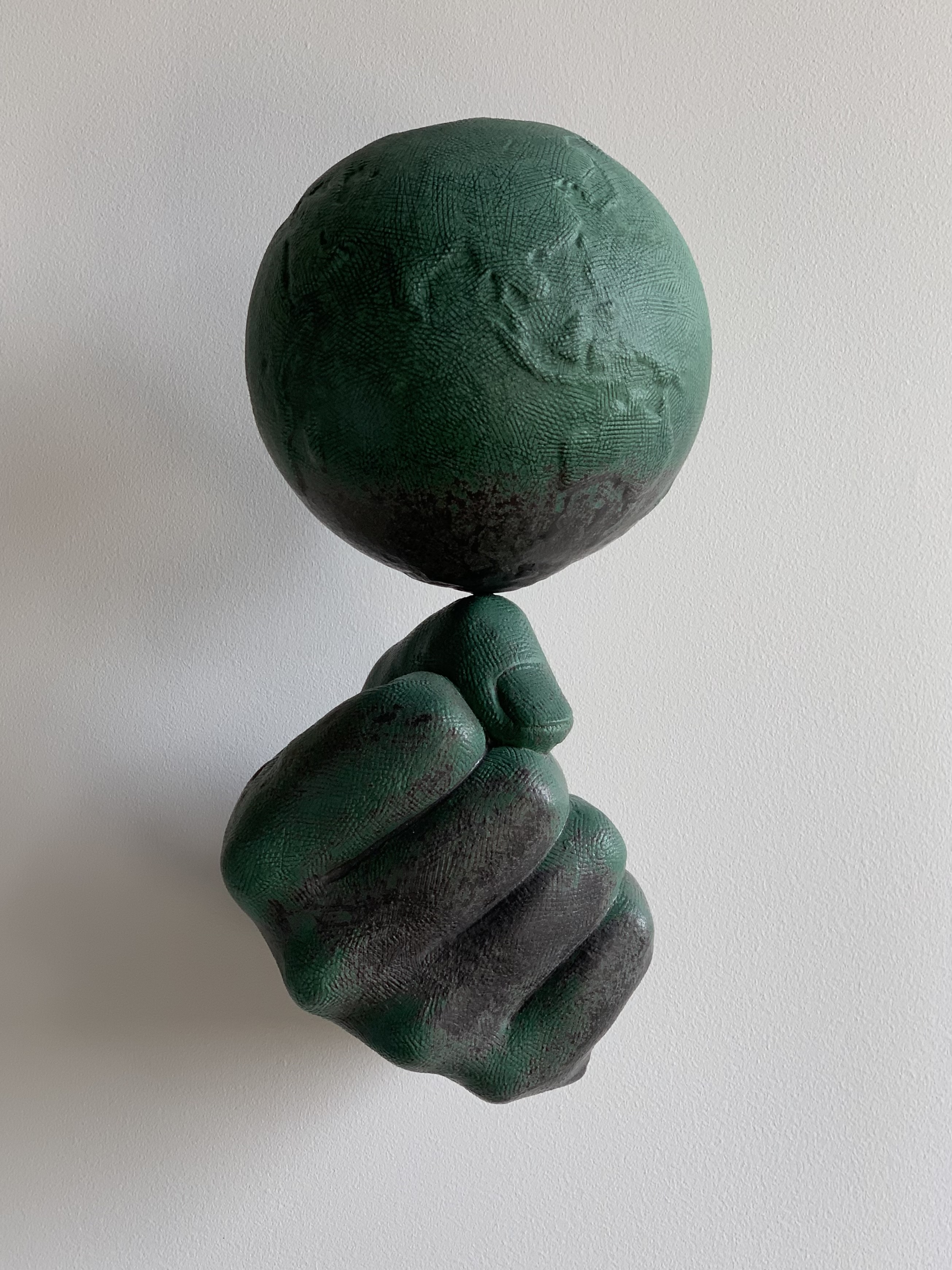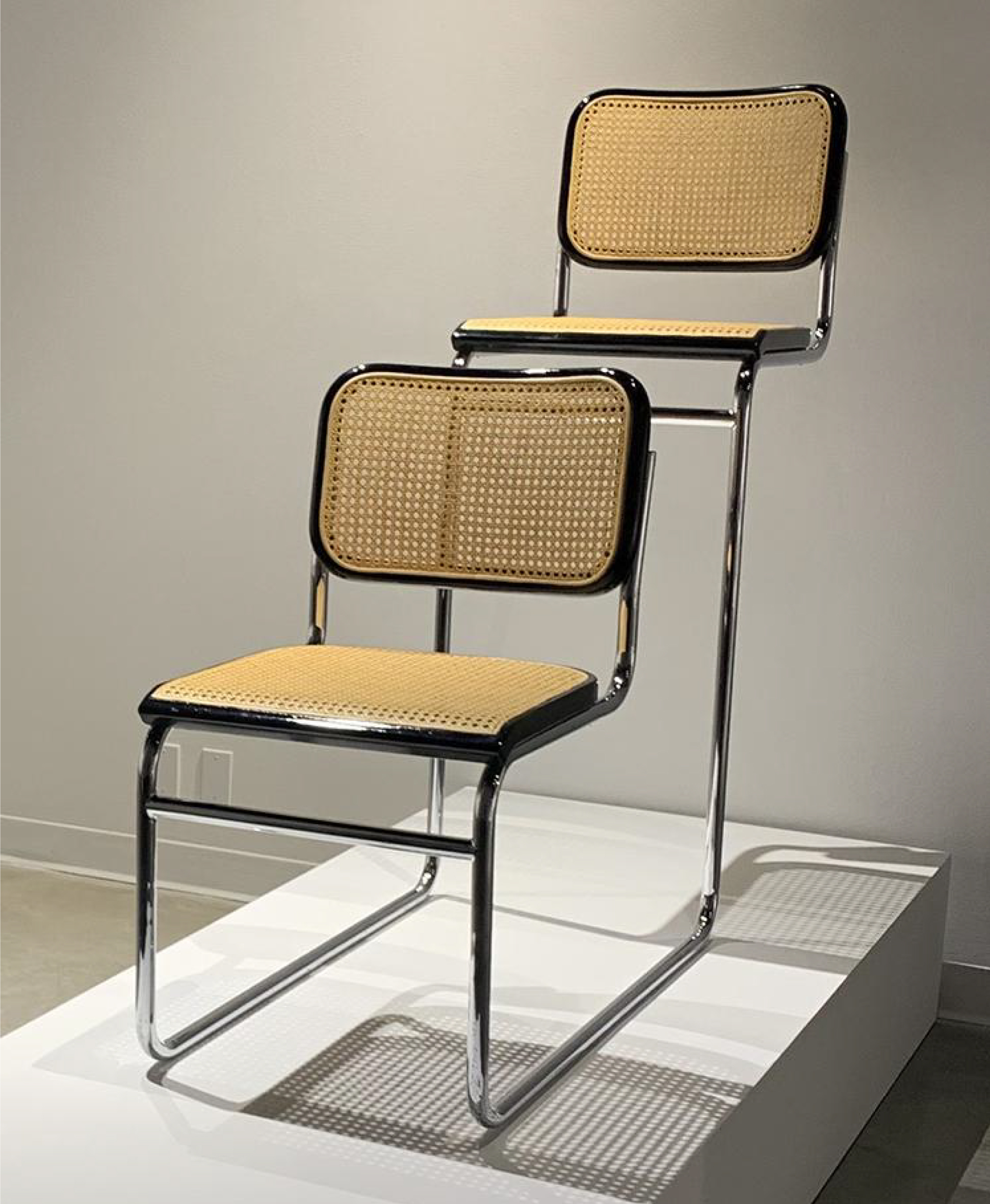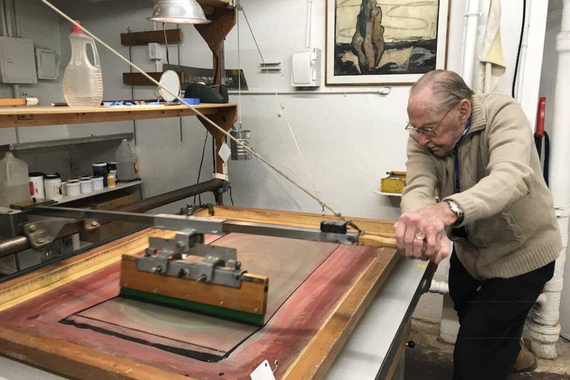Reverent and Irreverent Objects by Tom Lane
For immediate release
Contact Howard Oransky, Director, Katherine E. Nash Gallery
612-624-6518, horansky@umn.edu
nash.umn.edu
Reverent and Irreverent Objects by Tom Lane
January 18 – March 19, 2022

The Katherine E. Nash Gallery presents Reverent and Irreverent Objects by Tom Lane, an exhibition celebrating the 44-year artistic and teaching career of Associate Professor Tom Lane in the Department of Art at the University of Minnesota.
Location
The Katherine E. Nash Gallery is operated by the Department of Art at the University of Minnesota. It is located in the Regis Center for Art (East Building), 405 21st Ave. S., Minneapolis, Minnesota, 55455. Gallery: 612/624-7530. Department of Art: 612/625-8096.
Plan Your Visit
The Gallery is open to University faculty, staff, and students as well as the entire community. Gallery hours are: Tuesdays and Fridays, 11 am - 5 pm; Wednesdays and Thursdays, 11 am - 7 pm; Saturdays, 11 am - 3 pm. The Gallery is closed on Sundays and Mondays. The Gallery will be closed for Spring Break, the week of March 8 - 12.
Covid-19 Access Policy
The entry doors at the Regis Center for Art building are locked. University of Minnesota faculty, staff, and students may enter the building with their UCard. Members of the public should come to the main entry doors of the East Building at 405 21st Ave. S. and call the Gallery at 612/624-7530. The Gallery Attendant will let them inside. All visitors to the Regis Center for Art must wear a mask while inside the building.
Parking
The Gallery is accessible via Metro Transit's Blue Line, Green Line, and bus routes 2 and 7. Parking is available nearby on the street, at the 21st Avenue South ramp, 5th Street South lot, and 19th Avenue South ramp; hourly or event rates apply.

Artist Statement
We all have experiences that shape us. Growing up in a small town in northeastern Wisconsin, I spent my summers playing in the woods, building treehouses, fishing in the river, and learning woodworking from my grandfather. I realized early on that I loved making things. I also realized early on that I cared for the diversity in the community in which I lived. I was raised in a Catholic family. My mother discouraged my siblings and me from playing with the Protestant and Jewish neighbors. That was a big red flag for me. I knew there was beauty and value in all people and all things. My ideology was forming as I grew from childhood to manhood.
I went to college, quit college, got drafted and found myself in Vietnam. The red flag got bigger. I didn’t realize it at the time, but the red flag had the letters PTSD embroidered on the back in very small letters. Spending a year, at age 21, in a war zone was formative to say the least. I am thankful that I did not have to take any lives during my tour in Vietnam. The death and destruction that I witnessed created deep impressions; not in a debilitating way, but in a strong emotional way that fueled my artistic practice and my actions as a citizen. After my discharge from the Army, I returned to college and became active in the antiwar movement. I recall our raised fists as we protested the war in Vietnam.
My return to college nourished my heart and my mind. I studied Art, Art History, Architecture, Design, Philosophy, and Religion. Many of the works in this exhibition bridge these disciplines. Ceramic vessels become monuments, chairs become metaphors for relationships or challenge ideas of utopia. Some of the objects in this exhibition are purely Reverent and some the objects in this exhibition are purely Irreverent but are somewhere in-between. In-between because conversations are needed. – Tom Lane

I believe art has a transcendental value that has the power to heal. The vessel is an understood form to hold this important content. The intellect does not get in the way; the message goes straight to the heart. — Tom Lane
Artist Biography
Tom Lane is a Minneapolis-based artist and an Associate Professor of Art at the University of Minnesota in Minneapolis. Lane’s artistic practice embraces various forms of digital technology including digital ceramic printing. Porcelain is his primary medium, a material with history and symbolism. Lane employs appropriation and hybridization in his practice and makes conceptual, not functional, vessels. Tom Lane’s work has been exhibited at Hunter College, New York, NY; Genesee Gallery, Rochester, NY; Brown University, Providence, RI; Houston Center for Contemporary Crafts, Houston, TX; Fort Hays State University, Hays, KS; Market House Craft Center, Petersburg, PA; and numerous other venues nationally, and in the People’s Republic of China at the Central Fine Arts Academy, Beijing; and the Great China Museum, Jingdezhen. His work is included in numerous public and private collections, including the September 11 National Museum, New York, NY; the Weisman Art Museum, University of Minnesota, Minneapolis; the Albuquerque Museum, Albuquerque, NM; Timberwolves, Target Center, Minneapolis, MN; the Donna and Cargill MacMillan Collection, Indian Well, CA; and the Sanbao International Ceramic Art Museum, Jingdezhen City, Jiangxi Province, P.R. China.
Lane’s works amuse and provoke us. It is clear that they are meant to be ironic, that Lane is not celebrating these icons of American consumerism. He borrows the language of advertising and usurps its rousing power; he fragments corporate logos and makes us re-examine our understanding of them, visually and philosophically. The clean, hard finishes on these pieces evoke a kind of mechanical power. They seem untouched – perhaps untouchable – by human hands. At the same time, they seduce us: how perfect, how hard, how clean. The “finish fetish” first seen in the 1970s Funk movement is continued here, as is the movement’s sharp, incisive humor. – Jeanne Quinn, University of Colorado
These visual puns on consumerism, fast food, and alcohol appear to float on the wall. We know they are dumb, but still we consume. The intent of this work is to ask the viewer to check in with their narcissistic tendencies. The presentation of corporate logos creates silly but poignant statements about consumer culture. – Tom Lane
Mickey and Minnie Mouse are American icons. They are so well known that all we need to see is two small circles over a larger circle to identify them. They are an idealized couple, like Adam and Eve and Romeo and Juliet. These anthropomorphic representations allow children to identify from a distance with these cartoon characters and learn about the world in a child-appropriate way. In these adult versions of Mickey and Minnie, extended objects appear in the position of the nose and mouth that allude to issues of body ornamentation, consumerism, ethical behavior, and nudity. – Tom Lane

Political satire is the focus of this series. The satirist always tells the truth. Political satire has been one of the most effective ways of criticizing politicians and their policies for thousands of years, dating back to the Greek and Roman cultures and William Shakespeare. It also has a rich history in American culture on the Saturday Night Live television show. – Tom Lane
Mission Statement
The Katherine E. Nash Gallery is a research laboratory for the practice and interpretation of the visual arts. We believe the visual arts have the capacity to interpret, critique, and expand on all of human experience. Our engagement with the visual arts helps us to discover who we are and understand our relationships to each other and society. The Katherine E. Nash Gallery will be a center of discourse on the practice of visual art and its relationship to culture and community -- a place where we examine our assumptions about the past and suggest possibilities for the future. The Nash Gallery will play an indispensable role in the educational development of students, faculty, staff and the community.


